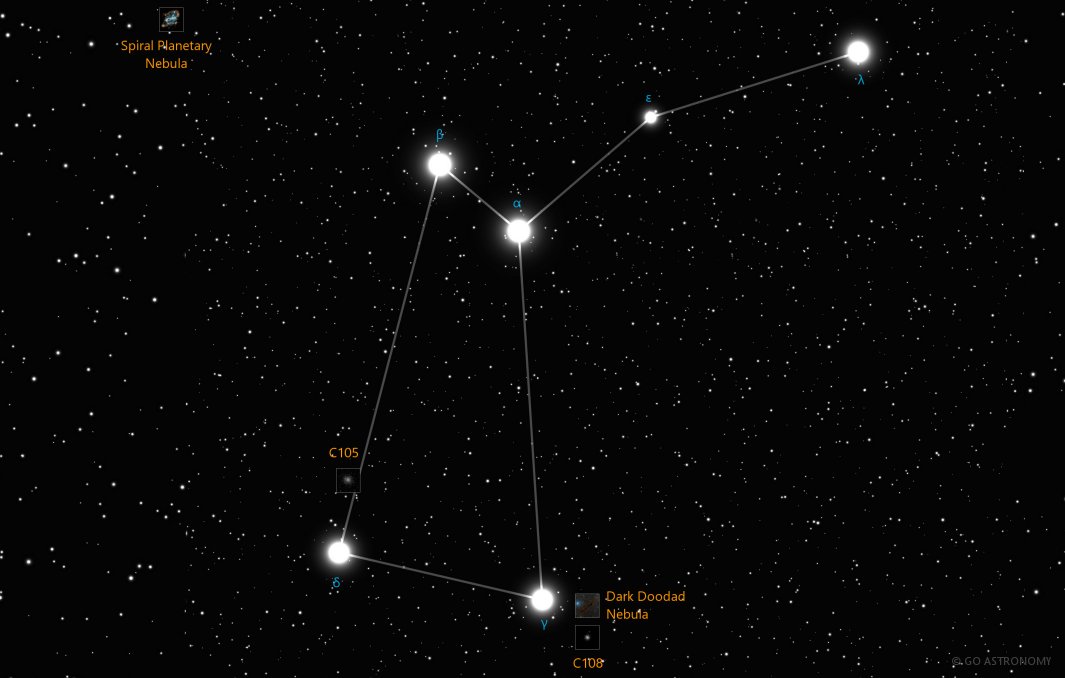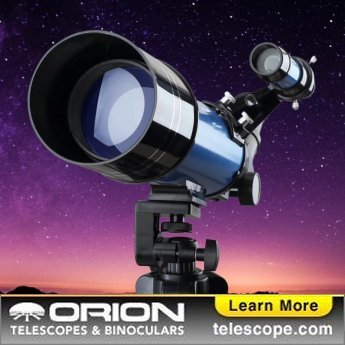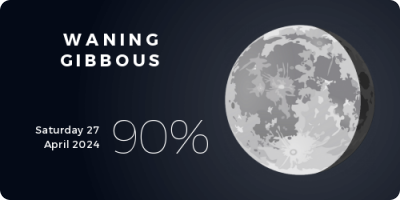Musca, the Fly (Mus)
(MUSS-cuh)
The Southern constellation of Musca, the Fly, is best viewed in Spring during the month of May.
Musca is the 77th largest constellation. It's brightest star is Alpha Muscae at magnitude 2.69. The boundary of the Musca constellation contains 4 stars that host known exoplanets.
Musca is a circumpolar constellation, so is visible year-round in the Southern hemisphere. Conversely, it is not visible in the opposite hemisphere.
- Pronunciation:
- MUSS-cuh
- Meaning:
- Fly
- Genitive:
- Muscae
- Abbreviation:
- Mus
- Constellation Family:
- Bayer
- Hemisphere:
- Southern
- Quadrant:
- SQ3
- Visibility:
- 10° N - 90° S
- Best viewing month*:
- May
- Area:
- 138 sq. degrees
- Size:
- 77th largest
- Circumpolar** (N=northern, S=southern):
- S circumpolar
- Right Ascension (avg):
- 12h 28m
- Declination (avg):
- -69°
- Brightest star:
- Alpha Muscae (2.69)
- Stars with planets:
- 4
- X-ray stars:
- 4 (2 binaries) stars
- Messier objects:
- |
Brightest Stars in Musca
The 10 brightest stars in the constellation Musca by magnitude.
- Star
- Magnitude
- Spectral class
- Alpha Muscae (α Mus)
- 2.69
- B2IV-V
- Beta Muscae (β Mus)
- 3.04
- B2V + B3V
- Delta Muscae (δ Mus)
- 3.61
- K2III
- Lambda Muscae (λ Mus)
- 3.68
- A7III
- Gamma Muscae (γ Mus)
- 3.84
- B5V
- Epsilon Muscae (ε Mus)
- 4.06
- M5III
- Mu Muscae (μ Mus)
- 4.75
- K4III
- Eta Muscae (η Mus)
- 4.79
- B8V
- HD 115211
- 4.86
- K2Ib/II
- HD 103079
- 4.89
- B4V
Star Clusters in Musca
The most notable and easy-to-find star clusters in the constellation Musca . Also see all star clusters.
Nebulae in Musca
Notable and easy-to-find nebulae in the constellation Musca . Also see all nebulae.
- Nebula name
- Catalog #
- Nebula type
- Dark Doodad Nebula
- dark
- Engraved Hourglass Nebula
- planetary
- Spiral Planetary Nebula
- planetary
Black Holes in Musca
These are the most well-known smaller (non-supermassive) black holes in the constellation Musca. Although black holes cannot be seen directly, the smaller ones are at the center of some star clusters and supernova remnant nebulae, which can be seen. Supermassive black holes are at the center of most galaxies, such as Sagittarius A* at the center of our Milky Way galaxy. Also see all black holes.
- Black hole
- Type
- GU Mus
- stellar
The Southern Fly of the Night Sky
Musca, which is Latin for 'the fly', is a minor constellation in the Southern Hemisphere. Despite its small size and lack of bright stars, this constellation has a history that traces back to the 16th century and it is one of the few constellations to represent an insect.
Historical Overview
Musca was one of the twelve constellations created by Dutch astronomer Petrus Plancius based on observations from Dutch navigators Pieter Dirkszoon Keyser and Frederick de Houtman's voyage to the East Indies. It was first depicted in Johann Bayer?s celestial atlas Uranometria in 1603. Although initially referred to as 'Apis', the Bee, by the early 18th century, the constellation had been renamed Musca, and it has retained this designation to the present day.
Location and Main Features
Musca is nestled in the southern sky?s third quadrant (SQ3) and is visible at latitudes between +10? and -90?. It is surrounded by the constellations of Apus, Carina, Centaurus, Chamaeleon, Circinus, and Crux. The constellation spans 138 square degrees, making it the 77th largest constellation in the night sky.
Main Stars in Musca
The brightest star in Musca is Alpha Muscae, a blue-white subgiant located approximately 315 light-years away with an apparent magnitude of 2.7. Beta Muscae, a binary star composed of two blue-white stars, is the second brightest star in the constellation and shines with a combined magnitude of 3.04. The constellation's primary stars form an asterism that resembles a fly.
Interesting variable stars in the constellation include the Delta Scuti variable star Theta Muscae, one of the brightest members of its class, and the peculiar eclipsing binary system known as EE Muscae.
Deep Sky Objects
While it does not host any Messier objects, Musca is home to some interesting deep sky objects. These include the Dark Doodad Nebula, a conspicuous dark nebula, and the NGC 4372, a globular cluster that is one of the oldest of Milky Way's clusters.
There's also the Hourglass Nebula (MyCn 18), a young planetary nebula located about 8,000 light years away. Its intricate, symmetrical shape resembling an hourglass makes it a favorite subject for astronomers and astrophotographers.
Observation
Musca is best seen during the month of May. Its southern location makes it primarily visible from the Southern Hemisphere, and it is circumpolar for observers south of latitude 14?S, meaning it never sets below the horizon. While the constellation itself might not contain particularly bright stars, its proximity to the Southern Cross (Crux) makes it fairly easy to locate in the night sky.
Although Musca is one of the lesser-known constellations, its unique representation as an insect and its collection of interesting stars and deep sky objects make it worth seeking out for those observing from southern latitudes. Whether it's tracking the fluctuations of Theta Muscae or capturing an image of the Hourglass Nebula, Musca provides a fascinating patch of sky for both amateur and seasoned astronomers.
* Constellation shown for northen hemisphere skies. For the southern hemisphere, constellations appear rotated 180 degrees (upside-down and left-right reversed) from what is shown. Remember that seasons are reversed too - summer in northern latitudes is winter in southern latitudes.
** Circumpolar constellations are visible year-round in the hemisphere listed (and not at all in the opposite hemisphere).





